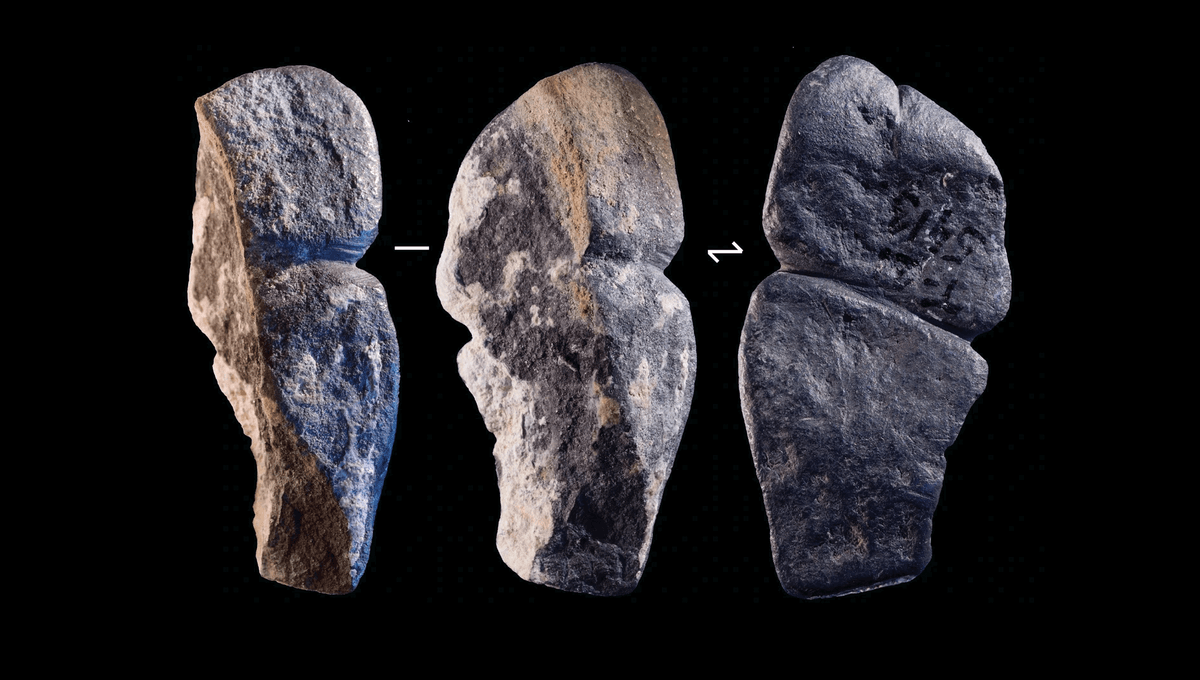
At over 42,000 years old, this might just be the earliest known representation of a penis. If that interpretation is correct, it could indicate that penises were among the very first things that prehistoric humans of Eurasia decided to artistically represent.
The phallus-like object was unearthed in 2016 in the Khangai Mountains of northern Mongolia. It consists of a carved graphite pendant that measures around 4.3 centimeters (1.7 inches) long, 2.1 centimeters (0.8 inches) wide, and 1.3 centimeters (0.5 inches) thick. This relatively small size suggests that it was most likely a personal ornament, perhaps a good luck trinket or a fertility charm.
Radiocarbon dating of organic material found near the discovery suggests it was crafted 42,400 and 41,900 years ago, making the object the “earliest known sexed anthropomorphic representation,” according to the researchers.
“It attests that hunter-gatherer communities used sex anatomical attributes as symbols at a very early stage of their dispersal in the region,” the study authors write.
Consisting of a long neck and stubby head, the tip of the pendant features a clear grove which the researchers believe is made to be the urethra of the penis.
However, this is just one interpretation of the object. Speaking to Science, some researchers not involved in the study expressed uncertainty over whether the pendant truly depicts a penis.
Nevertheless, the study authors point to other early artworks of the Paleolithic era that are brimming with sexuality and sensual depictions of the physical human form. Perhaps the most famous human-crafted object from this period is the Venus of Willendorf, dated around 25,000 years old, which depicts a voluptuous feminine body with curvy hips and large breasts.
There is also the Hohle Fels Phallus, a stone object almost indisputably carved into the shape of a penis, that was found in present-day Germany and dates to approximately 28,000 years old.
Given how common nude physical forms appear in artworks, from the prehistoric to the postmodern, the researchers from the new study contend their interpretation is the most likely.
“Although it is difficult entirely to rule out other possibilities, based on these morphological analogies the most compelling interpretation of the pendant is a simplified phallic representation,” they write.
Genitals aside, this object would be exceptionally old for an example of figurative art (ie. art that has strong references to the real world, not merely abstract patterns or decorative marks). Examples of figurative art emerged in Southeast Asia some 50,000 to 40,000 years ago, but are not documented earlier than 37,000 years ago in Europe and 30,000 years ago in Africa.
So, if this pendant really is a piece of figurative art, that means one of the first things they set out to illustrate was a big old penis. Some things never change.
The study is published in Scientific Reports.
Source Link: Pendant Suggests Humans Have Depicted Dicks For 42,000 Years